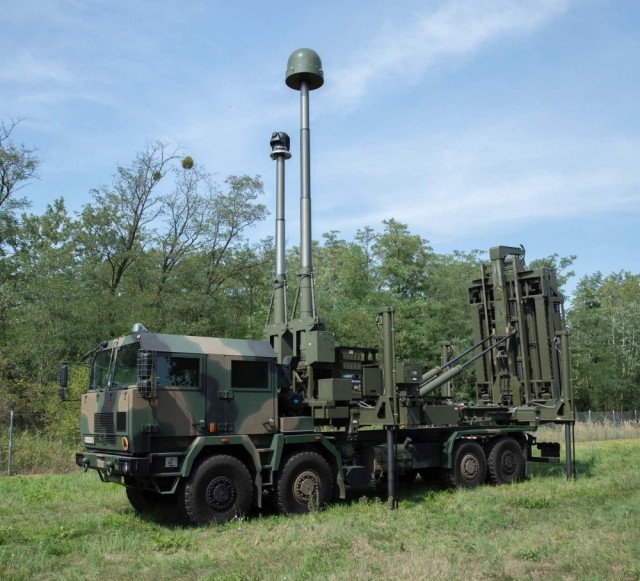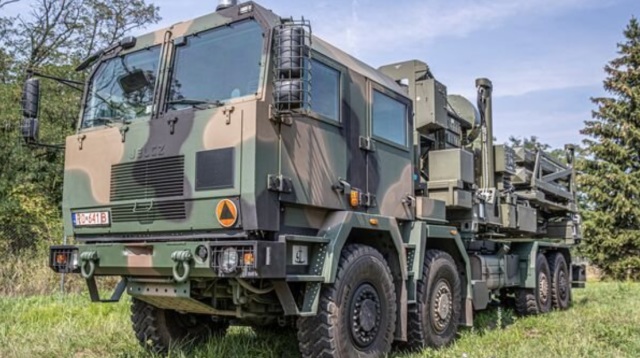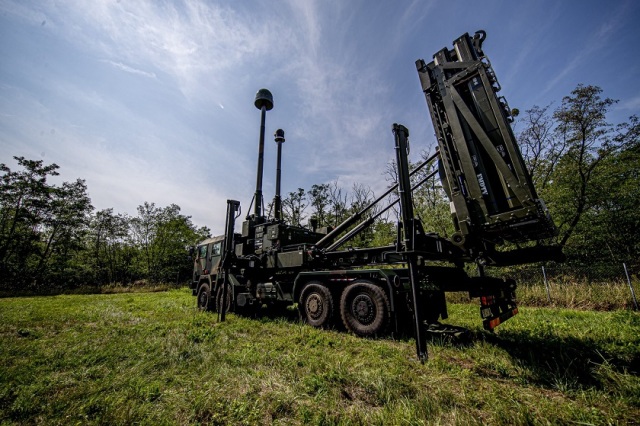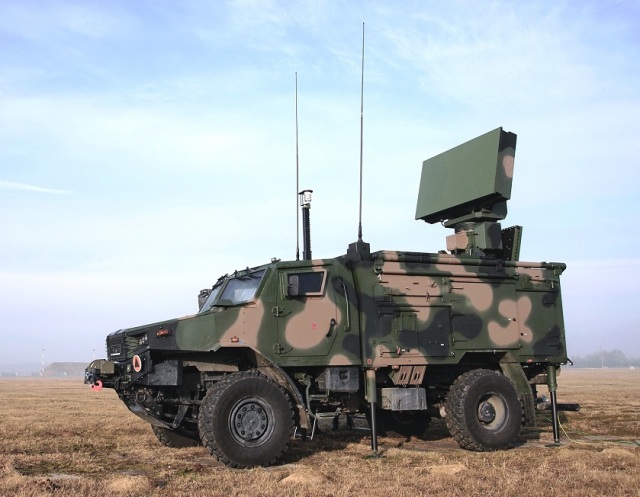On April 25, 2022, the Polish consortium PGZ-Narew signed a contract with the British branch of the European missile concern MBDA (MBDA UK) in the amount of 1.5 billion zlotys (320 million euros, the cost is not officially reported) for the purchase of the first two sets of ground-based short-range anti-aircraft missile system (that is, a total of one set of batteries, including two complexes) based on MBDA CAMM anti-aircraft guided missiles for the Polish armed forces under the Polish Narew program for the purchase of promising small and medium-range air defense systems ranges.

A variant of the MBDA SAMM (Sky Sabre) short-range anti-aircraft missile system for the Polish Narew program, with the execution of an eight-container self-propelled launcher on the chassis of the Polish car Jelcz P882 (8x8) (c) MBDA and PGZ-Narew
In fact, this SAM is a variant of the new British Sky Sabre complex, which has recently begun to enter service in the UK, produced under the lead role of MBDA UK, and uses the same CAMM (Common Anti-air Modular Missile) anti-aircraft guided missiles that were created during the implementation of the MBDA UK contract issued by the Ministry of Defense in December 2011. 483 million pounds for the full-scale development of this missile and for the creation of land-based and ship-based complexes with its use. The SAMM missile itself is actually a variant of the AIM-132 ASRAAM short-range air-to-air missile, but with the replacement of the infrared homing head with an active radar and with the introduction of radio correction via a two-channel datalink. The SAMM rocket has a mass of 99 kg, a length of 3.2 m and a body diameter of 166 mm. The maximum firing range of the SAMM is up to 25 km (the officially announced range of the Sky Sabre SAM is 15 km), the marching speed is about M = 3.
MBDA UK, under a contract with the Polish consortium PGZ-Narew, will supply SAMM missiles and iLaunchers vertical launchers, while the Polish Sola detection and targeting radar will be used in the complex in a "transitional version". The Narew complex should include three self-propelled eight-container vertical iLaunchers launchers with SAMM missiles, three transport-loading vehicles, a Sola fire detection and control radar (to be replaced by a promising Polish Sajna c AFAR radar in the future) and a command post (also of Polish design). Each launcher will also be equipped with an electron-optical station on a lifting mast for detecting aerial targets in autonomous or passive modes. PGZ-Narew will be responsible for the integration of all elements of the complex. All elements must be installed on the chassis of Polish military vehicles of the Jelcz series (8×8) - the exception will be the radar of the complex, which is carried out on the chassis of the Polish armored car Żubr-P (4x4).
The PGZ-Narew consortium includes the Polish state defense industrial group Polska Grupa Zbrojeniowa SA (PGZ, leader), as well as the enterprises Huta Stalowa Wola SA, Jelcz sp.z oo, MESKO SA, Ośrodek Badawczo Rozwojowy Centrum Techniki Morskiej SA, PCO SA, PIT-RADWAR SA, Wojskowe Zakłady Łączności No. 1 SA, Wojskowe Zakłady Uzboszenia SA, Military Electronic Works ARE and Zakłady Mechaniczne Tarnów SA. In the future, it is planned to achieve a high degree of localization of SAMM launchers and missiles at PGZ-Narew enterprises in Poland.
Earlier on April 14, the Weapons Inspectorate of the Ministry of National Defense of Poland signed a contract with PGZ-Narew for the supply of these first two complexes to the Polish Army. Prior to that, in November 2021, the Weapons Inspectorate recommended a complex based on CAMM anti-aircraft guided missiles (a variant of the British Sky Sabre complex) presented by MBDA UK as the basis for the Polish Narew program. Based on the results of this choice, in November 2021, the corresponding intergovernmental agreement was signed by the Ministers of Defense of Great Britain and Poland. The signing of contracts under the Narew program was expected in 2023, with the start of deliveries in 2025-2026, but the purchase of new air defense systems was sharply accelerated by Poland due to the outbreak of the conflict in Ukraine, and now the first two batteries in "transitional configuration" (with Sola radar) are urgently ordered. The first complex should be delivered in September 2022, and the second - by the beginning of 2023. In total, until 2035, Poland plans to purchase 23 batteries of a promising air defense system under the Narew program, the cost of the program is estimated from 30 to 60 billion zlotys (from 7.5 to 15 billion dollars).
In the competition under the Narew program, the American-Norwegian NASAMS complex and Israeli proposals acted as competitors of the MBDA UK proposed and eventually selected SAMM based on SAMM missiles. Poland became the first foreign customer of a ground-based SAMM missile system.
The ship-based SAMM SAM, which received the British name Sea Ceptor, was ordered by the British Ministry of Defense under a 2013 contract to replace the Seawolf Mk 2 SAM on British Type 23 frigates (installed on them during modernization since 2016), as well as for arming promising British frigates of types 26 and 31. To date, the Sea Ceptor ship-based SAM has also been ordered by the New Zealand and Chile Navies and selected for procurement by Canada and Brazil. At the beginning of 2022, a ship-based SAM using SAMM missiles and their longer-range CAMM-ER variant was also selected for three promising Polish frigates under the Miecznik program based on the British Arrowhead 140PL project.


A variant of the MBDA SAMM (Sky Sabre) short-range anti-aircraft missile system for the Polish Narew program, with the execution of an eight-container self-propelled launcher on the chassis of the Polish car Jelcz P882 (8x8) (c) MBDA and PGZ-Narew

Planned to be used in the first samples of the MBDA SAMM (Sky Sabre) short-range anti-aircraft missile system variant for the Polish Narew program of the Sola fire detection and control radar on the chassis of the Polish armored car Żubr-P (4x4) (c) PIT-RADWAR
